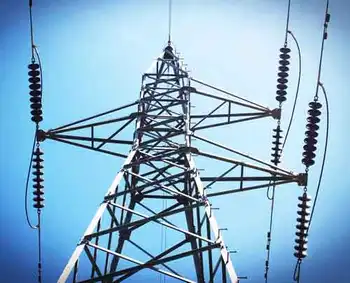Valley plugged in for summer: APS, SRP say energy supply good but stay wary of wildfires
MESA, ARIZONA - Despite problems at Unit 1 of the Palo Verde Nuclear Generating Station, Valley electric executives say they have lined up adequate power supplies to meet the expected peak demand for electricity this summer.
The biggest risk for interrupting electric service comes from the potential for wildland fires, officials for Salt River Project and Arizona Public Service told the Arizona Corporation Commission recently.
The commissioners held the meeting to assess the utilities' plans for meeting the demand for electricity, which always peaks during the summer because of air conditioner use.
"The drought outlook increases the potential for wildfires," said Mike Hummel, SRP's manager of supply and trading, adding that the fire danger "is one of the biggest impacts we could have this summer."
The fires themselves are not likely to damage the lines, but if wildland fires burn too close to major transmission lines, the lines have to be turned off for the safety of firefighters, said Gary Harper, SRP's manager of system operations.
SRP and APS officials told the commission they have stepped up training and coordination with firefighting services to deal with fire situations around power lines. Also, APS has increased trimming of vegetation around power lines to reduce the fire danger, said Steve Bischoff, general manager of construction, operations and maintenance for APS.
Meanwhile, the two utilities said they have secured alternative electric supplies to fill the gap if Palo Verde Unit 1 remains off line this summer. The shortfall would be made up primarily by purchasing power from merchant power plants that run on natural gas.
But, the cost of that replacement power is greater, said Tom Carlson, portfolio manager of marketing and trading for APS.
The Palo Verde unit, which produces 1,270 megawatts of electricity, is off line as crews attempt to fix a problem with a vibrating emergency cooling line. The problem has caused the unit, located 34 west of Phoenix, to be shut down or on reduced power since December.
APS spokesman Damon Gross said utility officials are confident the unit will be back in full operation before the peak electric demand season.
The coal-fired Mohave Generating Station near Laughlin, Nev., which normally supplies about 280 megawatts to SRP customers, is expected to be unavailable this summer because of a four-year project to install $1.1 billion in pollution control equipment.
But, SRP has completed installation of a new generating unit at the San Tan natural gas power plant in Gilbert, which will offset most of that loss.
SRP also will gain 100 megawatts of power this summer from the completion of the third unit at the Springerville coal-fired power plant in eastern Arizona, Hummel said.
APS and SRP jointly anticipate that peak demand in the Valley this summer will reach 11,149 megawatts, up 4 percent from the 10,726 peak last summer. The Valley's electric grid has a capacity of 12,375 megawatts, providing a margin of 11 percent.
Despite the optimism of utility officials, Commissioner Kris Mayes still expressed unease about the the Valley's electric situation.
She noted the utilities have underestimated peak summer demand in the past, and she said the continuing problems at Palo Verde unit 1 are worrisome.
"It goes without saying that the health of Palo Verde is critical to summer preparedness," she said.
Related News

Australian operator warns of reduced power reserves
Adelaide - Australia’s electricity operator has warned of a shortfall in generation and reduced power reserves on the horizon.
The Australian Energy Market Operator (AEMO) has called for further investment in the country’s energy portfolio as retiring coal plants are replaced by intermittent renewables, leaving the grid with less back-up capacity.
AEMO has said this increases the chances of supply interruption and load shedding.
It added the federal government should target 1GW of strategic reserves in the states most at risk – Victoria and South Australia.
CEO of the Clean Energy Council, Kane Thornton, said the shortfall in generation was due a decade of…




